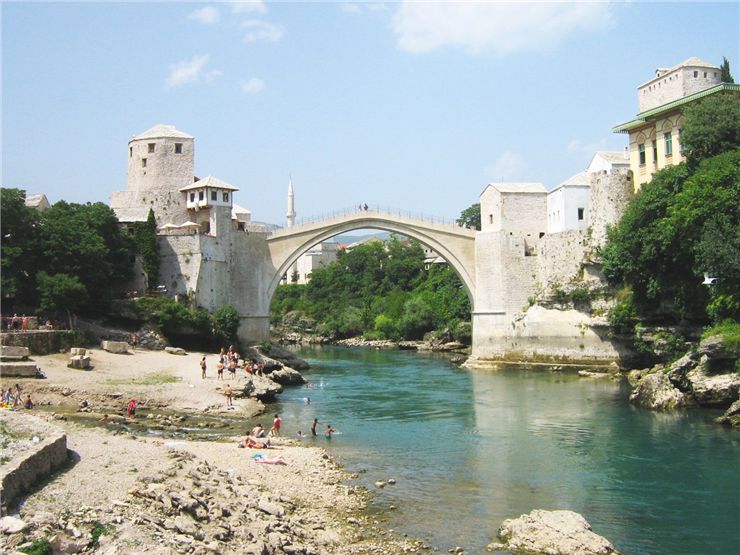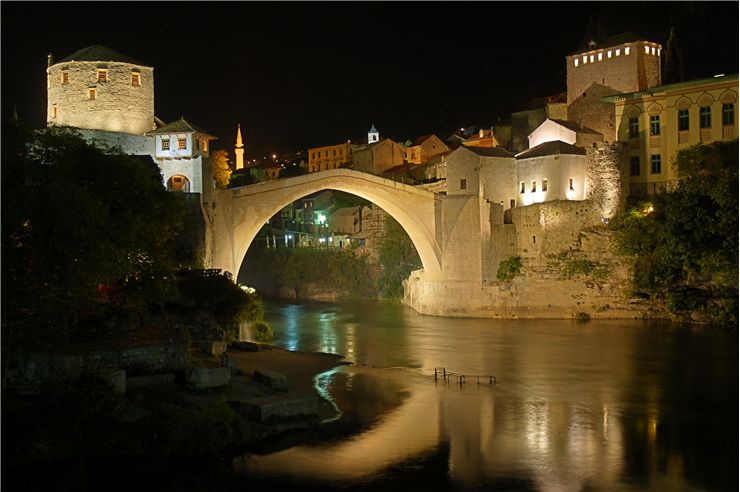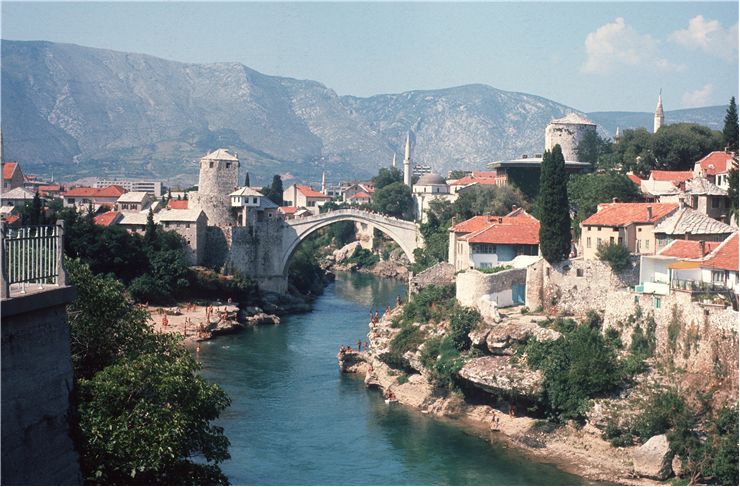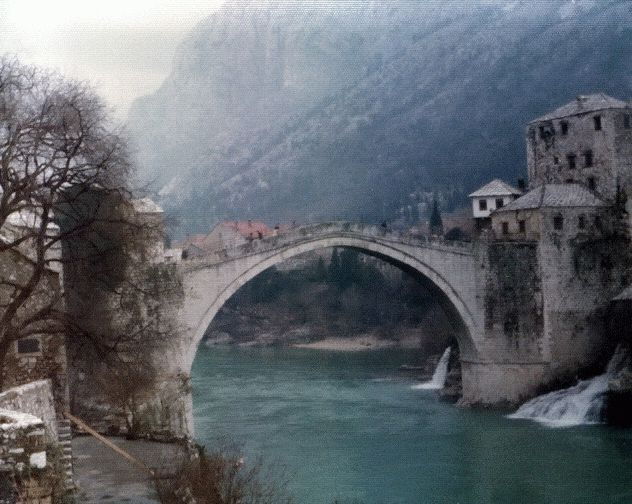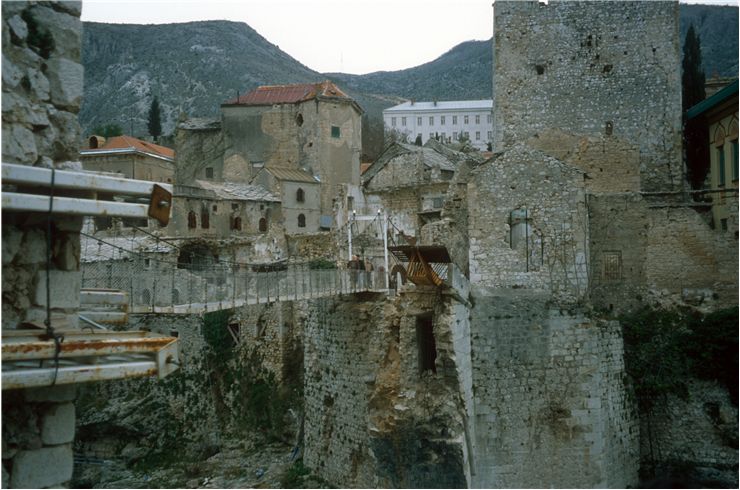Stari Most - Old Bridge - Facts and History
Stari Most (Old Bridge) is hump-backed stone arch bridge over the river Neretva in the city of Mostar, Bosnia and Herzegovina. Before it, at the same place stood wooden suspension bridge. Ottoman geographer Katip Çelebi wrote that the old bridge "...was made of wood and hung on chains," and it "...swayed so much that people crossing it did so in mortal fear".
In time, place grew and became important link between interior settlements and Adriatic Sea, so in 1557, Suleiman the Magnificent realized strategic position of Mostar and ordered construction of a new, stone bridge. Order fell on Mimar Hayruddin, student of chief Ottoman architect - Mimar Sinan, under the threat of death if construction does not succeeds. Little is known about the flow of the construction, only that it lasted for nine years. When the bridge was finished it was the bridge with a widest arch in the world at that time. It had no foundations on which to lean. Just abutments of limestone, which secure bridge to the walls of the cliffs. Construction was supervised by Karagoz Mehmet Bey, Sultan Suleyman's son-in-law. Bridge was 29 meters long, 24 meters high and 4 meters wide. It had two fortified towers for defense on each side.
Stories said that bridge held together metal pins and proteins from egg whites. They also said that Mimar Hayruddin, architect of the bridge prepared for his funeral on the day the construction ended and scaffolding was to be taken down. That bridge stood in perfect shape for 427 years. During the War in Bosnia and Herzegovina, it was destroyed on 9 November 1993. After the war, it was decided to reconstruct the bridge as similar as it could be done with same materials and the same tehnology.
The United Nations Educational, Scientific and Cultural Organization (UNESCO), World Bank, the World Monuments Fund and “Aga Khan Trust for Culture” formed a coalition that will oversee the reconstruction of the Stari Most. The Bosnian government, Italy, the Netherlands, Turkey, Croatia and Council of Europe Development Bank provided funding. UNESCO formed an international committee of experts In October 1998, which would oversee the design and reconstruction work of the bridge. On 7 June 2001 work started by Turkish company “Er-Bu Construction Corp” that specialized in reconstruction of old Ottoman bridges with old techniques. For material was used local tenelija limestone that was used in the original bridge too. Professional divers helped and recovered original stones that left after the explosion in the river and those stones were used as material too. Reconstruction was finished on 23 July 2004.
Every year a traditional diving competition is held from Stari Most. Young men jump from the bridge to the river Neretva. Although the competition is held in the middle of the summer (end of July), water is very cold so only the most trained and the most skilled will try to jump. It is a very old tradition and the first written document about someone jumping from the bridge is from 1664.
| Name | Stari Most |
| Offical Name | Stari most, Old Bridge Area of the Old City of Mostar |
| Other Name(s) | Old Bridge |
| Country | Bosnia and Herzegovina |
| Crosses | Neretva |
| Location | Mostar, Bosnia and Herzegovina |
| Type/Design/Architectural Style | Arch bridge, Ottoman bridge |
| Material | Stone, Tenelija |
| Designer/Architect | Mimar Hayruddin |
| Carries | Pedestrians |
| Width | 4 metres |
| Total Lenght | 29 metres |
| Height | 24 metres (79' ) |
| Clerance Bellow | 20 metres at mid-span |
| Construction Begin | 1557; 7 June, 2001 |
| Construction End | 19 July 1566 - 7 July 1567; 23 July , 2004 |
| Opened | 1566, 1567, 2004 |
| Destroyed | 9 November 1993 |
